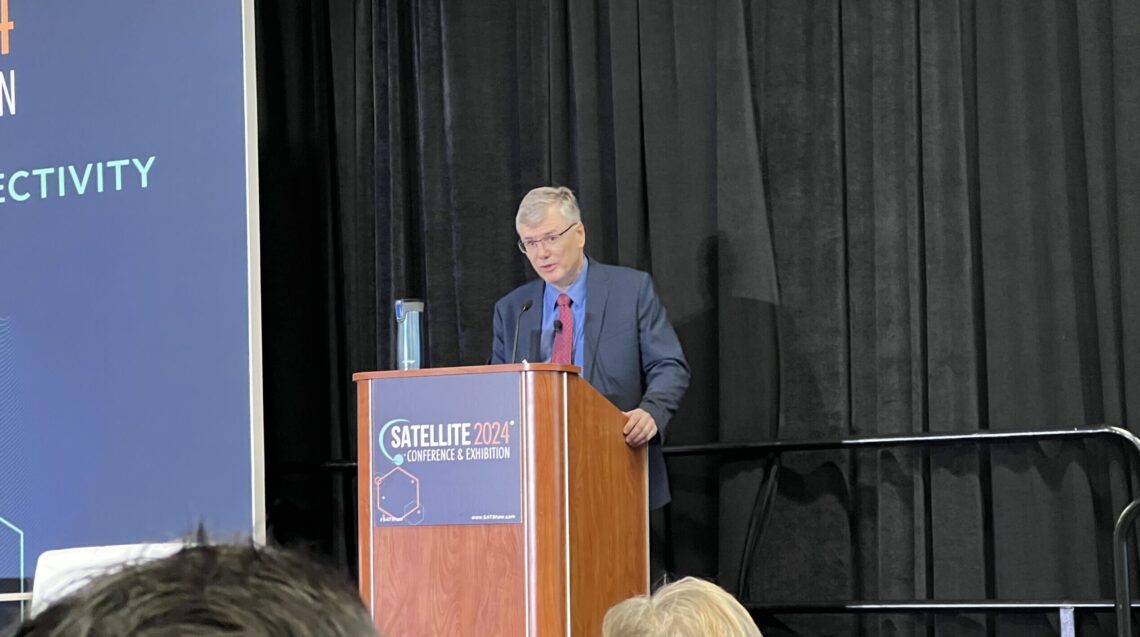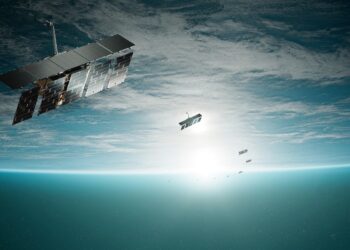WASHINGTON — The National Reconnaissance Office is pursuing a hybrid approach to its future architecture of spy satellites, leveraging both traditional large satellites and newer small satellites in low Earth orbit, a senior agency official said March 18.
Troy Meink, principal deputy director of the NRO, said in a keynote speech at the Satellite 2024 conference that the NRO sees value in leveraging new commercial capabilities for certain missions where small satellites can meet requirements at lower cost. But the agency also continues investing in bigger, more capable satellite buses and launch vehicles for its most critical needs.
The upcoming launch campaigns reflect this hybrid approach. Within days, the NRO plans to send a small satellite into low Earth orbit aboard a Rocket Lab Electron small launch vehicle, and then will loft one of its largest-ever satellites on a United Launch Alliance Delta 4 Heavy vehicle.
NROL-123, a small satellite mission, will be the first launched by Rocket Lab from its new U.S.-based pad in Wallops, Virginia, during a launch window that opens March 20. The company has previously flown NRO missions from its launch site in New Zealand.
Meanwhile, United Launch Alliance is targeting a March 28 launch of NROL-70 from Cape Canaveral Space Force Station, Florida. This will be the final flight of the Delta program.
The NRO acquires and operates the U.S. government’s spy satellites, and has been adapting its procurement strategy to take advantage of commercial small satellite technologies and the growing number of small launch vehicle providers, Meink said.
“We’ve changed our procurement methods to take advantage of LEO technologies,” Meink said. “But our main priority is to meet the requirements with minimum risk. Physics gets a vote. We can’t do everything with proliferated LEO.”
Planned increase in the number of satellites
Meink noted that the NRO is on a path to keep adding more…
Read the full article here


